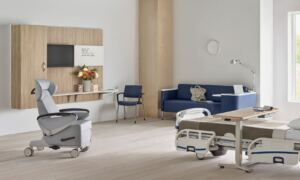How To Choose The Right Hospital Furniture For Patient Care
Choosing the right hospital furniture plays a significant role in improving patient care and ensuring comfort, safety, and efficiency in healthcare facilities. Whether setting up a new hospital or upgrading an existing one, selecting appropriate furniture is important to creating an environment that promotes healing and supports medical staff. Below are key considerations for choosing hospital furniture Abu Dhabi for patient care.
Consider comfort and ergonomics:
Comfort is paramount in hospital furniture, as patients often spend significant time in these settings. Opt for beds and chairs with adjustable features that allow patients to find the most comfortable position. Hospital beds should have adjustable heights and backrests to accommodate various medical needs and facilitate easier access for both patients and healthcare staff. Ergonomic design in chairs and recliners can help reduce strain for patients with mobility issues or those who need to remain seated for extended periods.
Consider durability:
Hospital furniture must withstand frequent use and rigorous cleaning protocols. Choose furniture made from durable materials that can resist wear and tear, such as high-quality plastics, metals, and upholstered fabrics with stain-resistant properties. Ensure that surfaces are easy to clean and disinfect to maintain hygiene standards and prevent the spread of infections. Furniture with removable and washable covers can also improve maintenance efficiency.
Focus on functionality:
Functional furniture improves the efficiency of hospital operations and patient care. Hospital beds should include features like built-in storage compartments for personal items and easy-to-use controls for adjusting positions. Ensure that furniture supports various medical functions, such as examination tables with adjustable heights and recliners with wheels for mobility. Furniture should also accommodate essential medical equipment and provide adequate space for staff to work effectively.
Ensure accessibility and safety:
Accessibility and safety are key considerations in hospital furniture selection. Choose furniture that supports easy access for patients with mobility challenges, including features like wide seat openings, grab bars, and clearance for wheelchairs. Furniture should meet safety standards, with smooth edges, stable bases, and non-slip surfaces to prevent accidents. Adjustable height features can also improve accessibility for patients and healthcare workers.
Address infection control:
Hospital environments require stringent infection control measures. Select furniture that is designed to minimize the risk of infection transmission. Opt for furniture with antimicrobial coatings and materials that inhibit bacterial growth. Avoid designs with hard-to-clean crevices or seams where pathogens might accumulate. Furniture should also support easy cleaning procedures, with surfaces that can be disinfected thoroughly.



